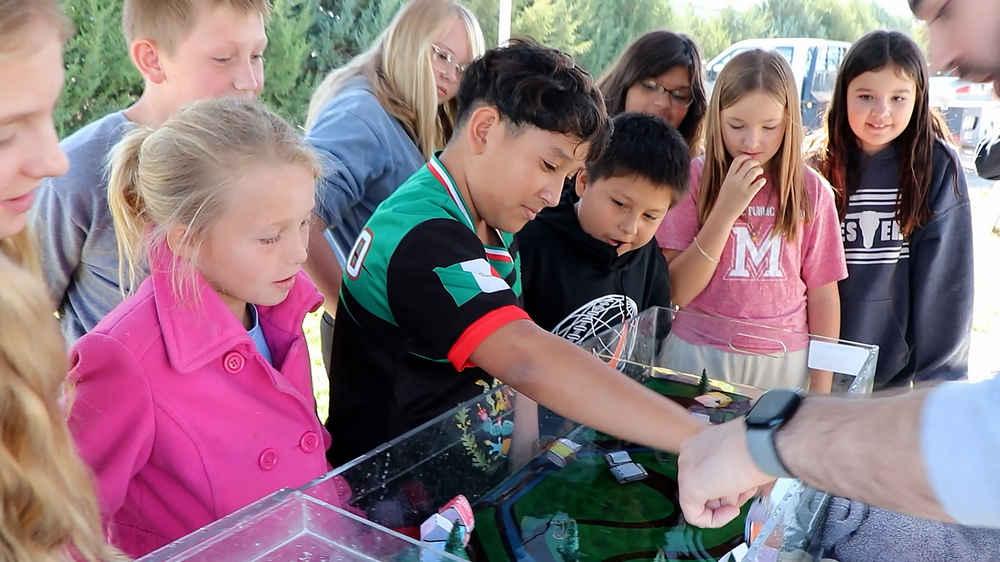![]()

By Chabella Guzman, PREEC Communications
Around 300 fifth graders from 10 elementary schools in the Panhandle of Nebraska attended the annual Water Education for Tomorrow (W.E.T.) held on Oct. 8-9 at the North Platte Natural Resources District (NPNRD) in Scottsbluff. The event had nine stations where students learned more about water and its importance.
“It’s an opportunity to get kids out of the classroom and extend on some of the things they’re learning in the classroom,” said David Griess, Education Services Unit 13 (ESU13) professional learning coordinator. “With W.E.T., we try to teach mostly some science standards and some of the health and safety standards that our country has, and it’s a good opportunity to get them out and learn from some of our area experts.”
ESU13 has partnered with the North Platte NRD for several years to host the event. The building and surrounding grounds are ideal for nine stations inside and outside, where the fifth graders engage in learning with games, hands-on activities, and animals.
“One of the favorites (according to students) is the Riverside Discovery Center. They bring out live animals, and that’s always a favorite,” said Kyle Ann Hopkins, NPNRD data management and outreach coordinator. She added that another favorite was setting irrigation tubes, as most of the students have never set tubes.

While most stations were staffed by local representatives, station five, the “Floodplain Model,” had members of the Nebraska Department of Natural Resources from Lincoln staffing the booth.
“We’re excited to teach kids how everything in a watershed connects,” said Jared Ashton, Nebraska DNR engineer. “When you have rain come down, depending on what kind of development, soils, and everything you have going on in the watershed can have different impacts on the houses.” The watershed in the model is made up of sponges, and as the sponges are removed, flooding becomes a problem for the homes. Ashton said the fifth graders placed their homes in the valley, near lakes, and on higher ground. Each time the watershed changed by levees or damns being built, homes were in trouble of flooding. “We then go in and replace the watershed with a parking lot, and the kids say, ‘oh no, don’t do that.’ They know right away there’s going to be flooding.”
Other stations included stormwater, aquatic wildlife, erosion, water safety, and more. “Fifth-grade science standards have changed some, so it (W.E.T.) doesn’t fit them 100 percent, like water safety that’s something that’s in the science standards, but it’s super important for students to learn,” Griess said. He added the event wouldn’t be possible without volunteers, Nebraska Extension, Nebraska Game and Parks, Scotts Bluff National Monument, the City of Scottsbluff, Riverside Discovery Center, the Bird Conservancy of the Rockies, North Platte NRD, and the Nebraska Department Natural Resources.
